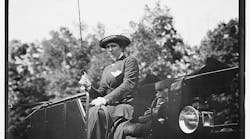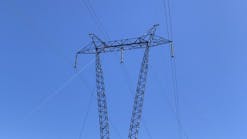California’s New 100% Renewables Legislation: How Will it Impact T&D Operations?
Major legislation signed this week in California commits the state to 100% renewables-based electricity generation by 2045.
Major T&D impacts
To ensure reliability of T&D operations there will have to be a great expansion, and movement down-voltage to the customer service drop (if not past it into the home), for Advanced Distribution Management Systems (ADMS) and related solutions for real-time grid optimization, and for customer engagement. Changes will be significant even for the portion of solutions which are already proven and in use in certain areas, since these capabilities will have to be rolled out on more of a system-wide basis going forward.
T&D operations impacts due to the legislation relate to a mix of direct and indirect incentives that will tend to increase the rate of adoption of electric vehicles, rooftop solar, energy storage, demand response, and other end-use customer products and services. The change in generation mix, which will eliminate natural gas plants that currently serve the afternoon air conditioning peak, is the main source of urgency on the supply side, and carbon-related incentives are a big source of positive motivation (and new market creation opportunities) on the demand and customer side.
Start of 'A long and difficult and contentious journey'
As reported by the Associated Press, Governor Jerry Brown stated “We’re definitely at the beginning of what’s going to be a long and difficult and contentious journey.” The comprehensive Associated Press article, by Jonathan J. Cooper (with contributions by Kathleen Ronayne) references the legislation as “a massive change in the energy grid,” since “utilities rely on natural gas plants to meet demand when renewables fall short, particularly in the early evening when the sun sets and people turn on their air conditioners as they get home from work.”
Employment of power generation personnel
Regardless of how interim difficulties and contentions end up being resolved, will the new law make job openings in fossil-fueled plants in California harder to fill?
After all, if fossil-fueled power plants are completely phased out during the next two-and-a-half decades in California, wouldn’t job seekers take a dim view of their long-term career prospects if they take a job in such a facility?
I asked Doug Houseman, Utility Modernization Lead at Burns & McDonnell, whether, beyond salary, he thinks there are any cross-training or other opportunities that would help utilities make jobs in non-renewable based power generation more attractive for employees going forward.
Doug Houseman’s answer:
“Yes, teaching instrumentation, power quality, and equipment maintenance (both how to and how to manage) are all transferable skills that are highly valued both in renewable and non-renewable generation. People who are skilled in six-sigma, operations and overall engineering are also highly valued. If you teach modeling and simulation – then people can move around in the organization. Cross training is critical, after all--as Robert Heinlein said, “specialization is for insects.”
Let’s retire the 'buggy whip story'
As an aside, it turns out that the proverbial buggy whip referenced in these sorts of marketing discussions does not work as well as a demonstration of marketing principals as a lot of us thought.
The original buggy whip marketing criticism came from Harvard Business School's professor Theodore Levitt, who wrote a Harvard Business Review article titled “Marketing Myopia” in 1960. Levitt argued that businesses are more likely to fail during periods of major change if they focus on their product (buggy whips) rather than the customer need they were serving (transportation).
After recently reading "Failing Like a Buggy Whip Maker? Better Check Your Simile" by Randall Stross in the New York Times, I will no longer reference Levitt's buggy whip idea. The Times article examines Levitt’s claims in detail and shows that the conclusions Levitt drew were not fully justified by the realities of the buggy whip marketplace, which include the importance of adapting to change by way of leveraging existing skills. For one thing, your company was likely to not transition from horse-drawn buggies to automobiles even if you focused on transportation needs of customers, if you only had skills related to working with wood for carriage frames, or with leather for whips.
The Times article debunks the buggy whip argument with detailed examples, showing how many of the businesses that made successful transitions from horse-drawn carriages to automobiles due to skills in serving the parts industry, not due to customer-listening skills.
Interestingly, among the businesses that survived the transition from horse-drawn carriages to automobiles is the Timken Company, a roller-bearing manufacturer whose customer base now includes wind turbine manufacturers.


